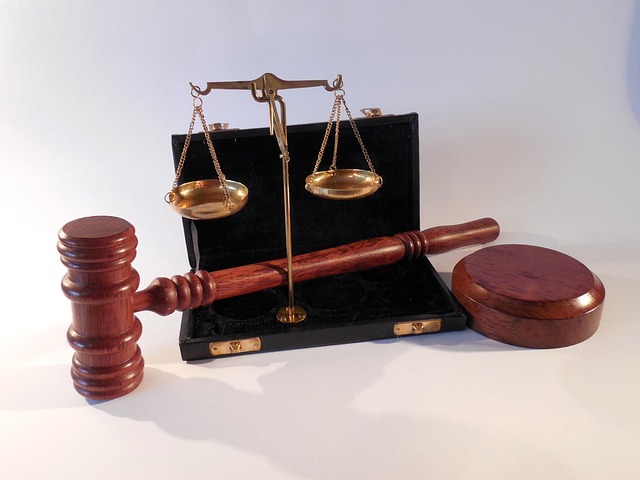Finance crime probes are thorough investigations by legal and financial authorities aimed at stopping and punishing offenses like fraud, money laundering, tax evasion, and corruption. These inquiries rely heavily on reviewing financial records, digital evidence, and witness testimonies, with evidence from criminal trials – such as bank statements, contracts, and investment records – serving as key proof in exposing fraudulent activities. Digital forensics track illicit transactions, while interviews provide firsthand insights into complex cases that may involve political or philanthropic communities. In the digital age, advanced techniques like cryptocurrency tracking, metadata analysis, and online communication examination play a crucial role in white-collar crime investigations. Case studies of successful evidence-based approaches – from embezzlement to political corruption – reinforce the importance of Examples of Evidence in Criminal Trials in combating financial crimes effectively.
In the evolving landscape of financial crimes, probe investigations are a vital tool for justice. This article delves into the intricate world of finance crime probes, exploring their definition and scope, the crucial role of evidence in criminalizing these acts, and cutting-edge techniques for gathering digital trails. Through examining compelling case studies, we uncover successful examples of evidence-based probes, highlighting the significance of concrete proof in securing convictions. Discover how these strategies are reshaping criminal justice, providing a closer look at the intersection of finance and law through the lens of evidence.
- Understanding Finance Crime Probes: Definition and Scope
- The Role of Evidence in Criminalizing Financial Crimes
- Uncovering Digital Trails: Techniques for Gathering Evidence
- Case Studies: Examples of Successful Evidence-Based Probes
Understanding Finance Crime Probes: Definition and Scope

Finance crime probes are thorough investigations conducted by legal and financial authorities to uncover and penalize illegal activities involving money and financial institutions. These probes encompass a wide range of offenses, from fraud and money laundering to tax evasion and corruption. The primary goal is to ensure fairness in economic transactions and protect the integrity of financial systems. Through meticulous examination of financial records, digital evidence, and witness testimonies, investigators piece together the extent of criminal activities.
Examples of evidence in criminal trials play a pivotal role in these probes. Documentation such as bank statements, contracts, and investment records can serve as irrefutable proof of fraudulent schemes. Digital forensics techniques are employed to track illicit transactions and identify patterns indicative of money laundering. Additionally, interviews with individuals involved, including witnesses and accusers, provide firsthand insights into high-stakes cases. These probes often extend their reach to the philanthropic and political communities, where complex financial structures and undisclosed conflicts of interest can harbor criminal activities, demanding close scrutiny.
The Role of Evidence in Criminalizing Financial Crimes

In financial crime probes, evidence plays a pivotal role in establishing guilt or innocence during criminal trials. Investigators and prosecutors must gather concrete, relevant, and admissible proof to build robust cases against suspected white collar offenders. These high-stakes cases often involve complex financial transactions, intricate schemes, and sophisticated manipulation of records, making the need for meticulous documentation even more critical. Examples of evidence in criminal trials include financial records, digital footprints left by cybercrime, witness testimonies, and physical documents such as contracts or receipts that can serve as smoking guns.
White collar and economic crimes, given their subtle nature, require a keen eye for detail and an understanding of the financial landscape. The presentation of compelling evidence is essential to securing convictions in these cases. In many instances, prosecutors rely on forensic accountants and digital forensics experts to help uncover hidden assets, trace illicit funds, and reconstruct fraudulent activities. This specialized knowledge is crucial in navigating the intricate web of white collar defense strategies employed by accused individuals or organizations.
Uncovering Digital Trails: Techniques for Gathering Evidence

In the digital age, uncovering digital trails has become a pivotal aspect of financial crime probes. Investigators employ advanced techniques to gather evidence, such as tracking cryptocurrency transactions, analyzing metadata from emails and documents, and examining online communication platforms. These methods have proven invaluable in white-collar and economic crimes cases, where traditional paper trails may be scarce or easily altered. By leveraging data analytics and specialized software, law enforcement can now uncover subtle patterns and connections that might otherwise go unnoticed, leading to winning challenging defense verdicts.
For instance, examples of evidence in criminal trials include online chat logs detailing illicit transactions, IP addresses linked to suspicious activity, and digital signatures indicating tampering or forged documents. This robust body of digital evidence not only strengthens the case but also facilitates the complete dismissal of all charges, especially when combined with robust legal strategies tailored to these unique types of crimes.
Case Studies: Examples of Successful Evidence-Based Probes

In the realm of finance crime probes, case studies serve as compelling examples of successful evidence-based approaches. High-stakes cases involving complex financial schemes often require robust and creative investigative strategies. One prominent example is the probe into a large-scale embezzlement scheme within a prestigious philanthropic organization. Through meticulous analysis of financial records, investigators were able to uncover discrepancies that led to the arrest and conviction of several key figures. This case underscored the power of evidence-based methods in navigating intricate financial crimes.
Additionally, political communities have also benefited from evidence-based probes. A recent investigation into political corruption involved extensive use of digital forensics to analyze encrypted devices and online activities. The resulting evidence played a pivotal role in unraveling a web of illicit transactions and influence peddling. These successful instances demonstrate the effectiveness of using concrete examples from criminal trials to fortify investigative techniques, ensuring that general criminal defense strategies remain robust and adaptable in the face of evolving financial crimes.
Finance crime probes, as demonstrated through our exploration of understanding, evidence collection, and successful case studies, are crucial in combating financial crimes. Uncovering digital trails has revolutionized the way investigators gather evidence, leading to more robust cases and increased convictions. The role of evidence in criminalizing financial crimes cannot be overstated, providing clear and compelling proof for courts to base their decisions on. As we move forward, leveraging technological advancements and sharing best practices will further strengthen these probes, ensuring a safer and more transparent financial landscape. Examples of successful evidence-based probes serve as a testament to the power of thorough investigation, offering valuable insights into how such strategies can be applied in various scenarios.






